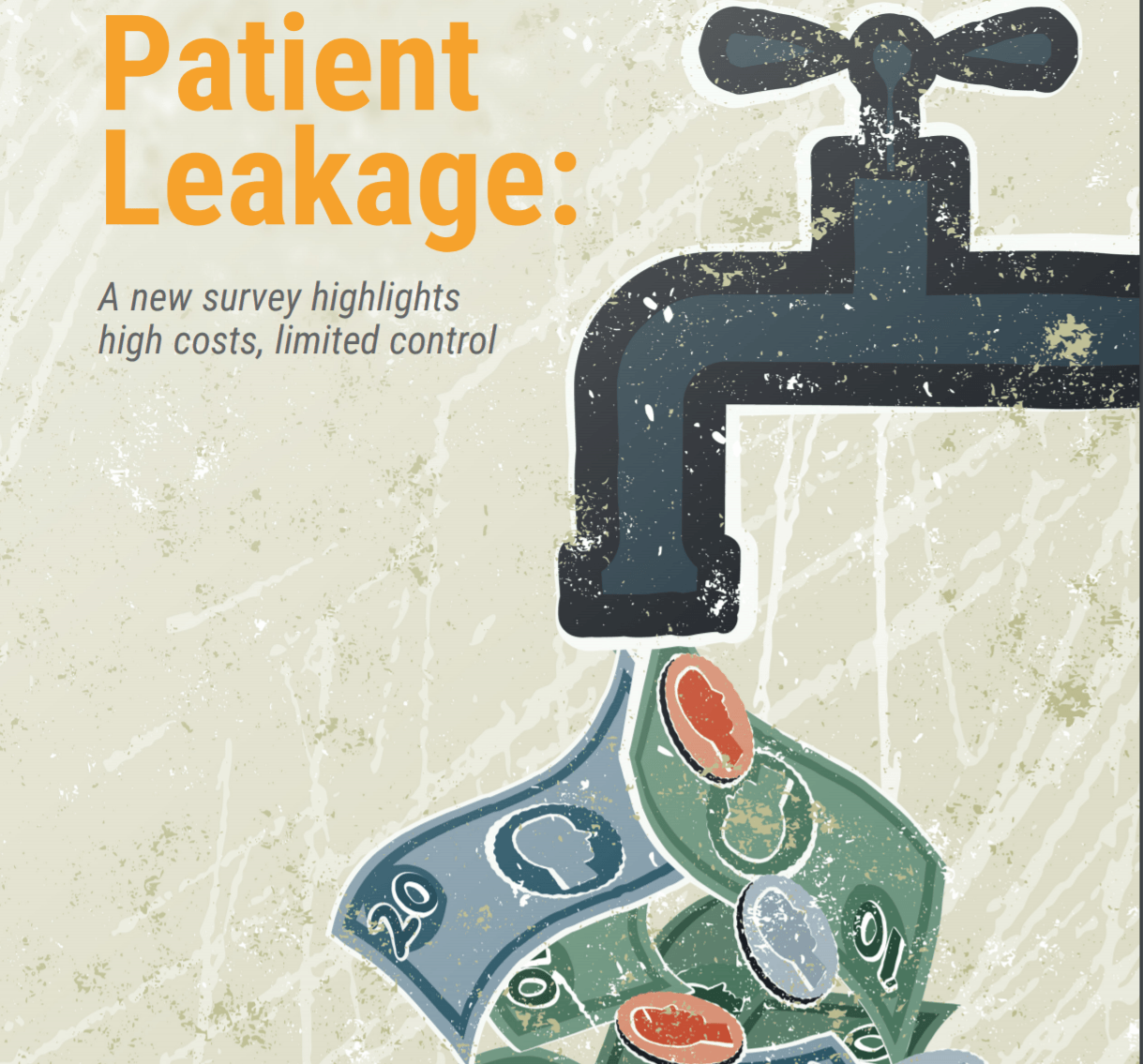
The vast majority of healthcare executives recognize the importance of referral management; however, their ability to analyze and address patient leakage lags behind, according to a new survey conducted by Fibroblast, a referral management platform. The survey reveals almost a quarter (23%) of healthcare executives do not even track patient leakage at all. All this despite almost 9 in 10 who say it’s a priority.
Survey Report Background
Healthcare organizations have many strategic priorities, but the data in this report reveals that one of the places where leaders should focus their attention is on patient referrals and leakage. Conducted by Sage Growth Partners, Fibroblast commissioned the independent survey in August 2018, of 104 healthcare executives to learn what they are doing to understand and manage referrals and to gain insights into how much patient leakage is costing them. The survey provides new insights into how healthcare executive perceive the problem and how they are addressing it.
Patient Leakage: The Gap Between Priority & Action
There’s a gap between priority and action. The report finds that 87% of healthcare executives say patient leakage is a high priority, but 23% don’t track leakage and 20% don’t understand where and why it occurs. Failing to manage leakage has a high cost. Over 40% report they’re losing 10% or more of annual revenues, 19% are losing over 20% of revenues to leakage, and 23% don’t know how much they are losing.
In fact, there are many hands but few owners. Typically, the responsibility for tracking and managing leakage largely resides in the C-suite; however, only 69% state it is assigned to more than one person. Using tailored solutions built specifically to analyze and manage referrals can address these gaps, but it is still in its infancy but growing. Only 2% of executives today exclusively use a third-party solution but 19% plan to purchase one in the next year or two.
Other key findings of the report include:
Common Sources of Patient Leakage
-
Executives attribute patient leakage to a variety of factors; physicians referring to competitors because of personal relationships (38%) was the No. 1 cited cause.
-
Other causes include patients choosing care from competitors (32%), physician lack of understanding of same/similar services in-network (15%), physician referral to competitors because of better availability (12%), and other (3%).
EMRs are the default options but satisfaction isn’t glowing
-
When asked which approach is used to manage referrals, 38% said their EMR, 16% said an in-house solution, 2% outsource to a referral management vendor, and 34% use a combination of the three. About one in 10 either don’t know (5%) or don’t currently manage referrals (6%).
-
Some 19% of executives aren’t satisfied and 57% are only somewhat satisfied with their EMR’s referral management capabilities. Only 10% are extremely satisfied, while 13% do not use their EMR to manage referrals and 2% say their EMR cannot manage referrals.
As a result, a number of organizations plan to purchase a third-party referral management solution.
• 19% plan to purchase a solution in the next year or two.
Closing the Gap
To survive, today’s healthcare organizations must navigate both the fee-for-service and the value-based world. That means they need to grow revenues while demonstrating better value to payers and taking on more risk. To close the gap, a growing number of executives are looking beyond their EMRs and in-house solutions to third-party referral management solutions that were specifically designed to analyze referral patterns and guide patients to high-performing providers within their network.
“Every day, patients walk out of the hospital door and either do nothing with the referral they’ve been given, or they go across the street to a competitor on their doctor’s recommendation. The net effect is that patients don’t receive the care they need, and healthcare organizations lose revenue,” says Scott Vold, Fibroblast Co-Founder, and CEO. “As they take on more risk, organizations must build and manage high-performance networks to control costs and demonstrate quality. That makes it essential for them to track and understand their referral patterns to get visibility into patient leakage – most of which is within the organization’s control, and significantly impacts patient health and the bottom line.”
